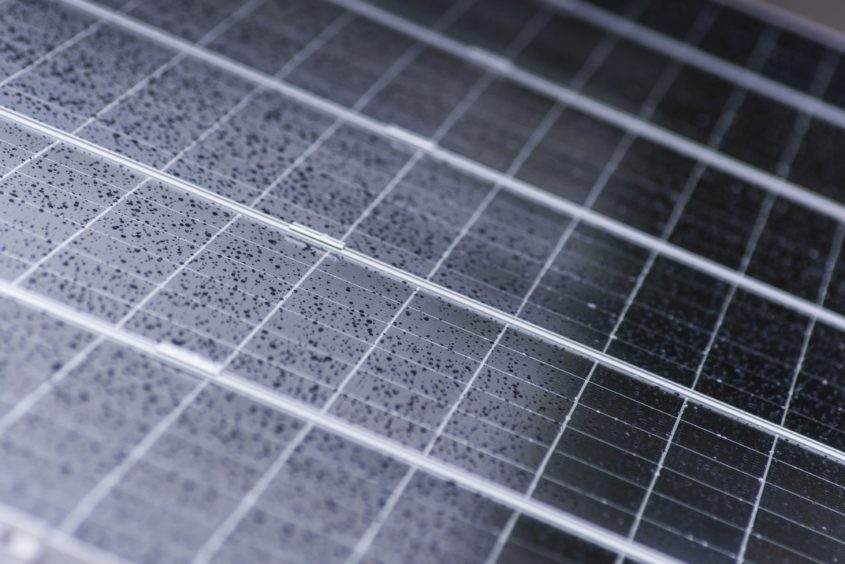
The coronavirus pandemic has taken its toll on the world, with lives lost and economies shrinking.
For the most serious cases of coronavirus, patients require oxygen and ventilators. Health systems throughout the world have struggled to meet this need. In countries where electricity is unreliable, this is an additional challenge.
“There are two areas that can be challenging in these contexts. Generation and transmission. One quarter of sub-Saharan African facilities don’t have access to power – in many cases, though not all, because they’re far from the grid. One solution that can be implemented relatively quickly is a captive solar or solar minigrid installation, or a diesel generator, or a solar-diesel hybrid,” said Rob Fetter, senior policy associate at the Nicholas Institute for Environmental Policy Solutions.
Primary care facilities have seen some progress in recent times, according to Prashant Yadav senior fellow at the Center for Global Development (CGDev). Clinics have benefited from innovations, such as running vaccine fridges on propane, or small-scale solar.
“With Covid, there is a greater need for tertiary care and more sophisticated hospital setting. In an ICU, for instance, there is a significant need for power. Covid is making this problem much more visible,” Yadav said.
Design
One part of this problem can be addressed through innovation of equipment. Progress can throw up new problems. An oxygen concentrator is an appealing solution, on the one hand, because it allows oxygen to be extracted from the surrounding air.
This allows healthcare facilities to skip deliveries of oxygen tanks but it does require continuous power. “Having a patient on oxygen and then having a power failure can be more detrimental than no oxygen support,” Yadav said.
Some of the sophisticated equipment used in hospitals has not been designed for use in low resource settings, he continued. They may require purchases of independent power modules.
Furthermore, if such equipment breaks down it can be challenging to repair. New designs must be formulated in order to take into account such circumstances.
Equipment “will need to be designed and built to be robust and power-spike proof. Equipment adaptation is being driven by private philanthropy, such as the Gates Foundation,” said Yadav.
Solar was the option endorsed by Melbourne University senior research fellow Hamish Graham for oxygen concentrators. “There were some challenges in finding the right local contractor for installation of the equipment.”
Supply
Beyond redesigning equipment, though, countries and institutions are also looking at how to tackle the power problem. Historically, multilateral and bilateral funders had focused on efforts to extend the national grid, Fetter said.
“As countries move closer to universal access and focus on last-mile connections, average new connection costs get higher, even as there have been huge improvements in solar and battery capacity. So in the last few years, donors have shifted some resources to funding offgrid facilities too.
“Costs for offgrid power are still high, but there’s a calculation to be made between extending a grid for perhaps 100km or installing small generation capacity.”
Covid-19 has focused attention on healthcare, with a number of oil companies in the region taking steps to roll out support.
“My experience suggests Senegal, South Africa and Kenya are faring better in their efforts to secure power for healthcare,” said Yadav. “Those countries doing less well tend to either have resource constraints or infrastructure challenges.”
One success is Nigeria’s Rural Electrification Agency (REA), which recently completed four minigrids specifically for clinics working on Covid-19 patients, Fetter said.
Change
Covid has highlighted sub-Saharan Africa’s power problem. For those seeking medical help, and those quarantined, the need for reliable electricity has never been clearer.
“Covid means we don’ t have anywhere to hide. We need to confront those challenges head on,” Lumos Nigeria’s CEO Peju Adebajo said. “There are plans in the works to tackle this, with the major Siemens transmission project and recent news of the World Bank providing a $750 million credit for the sector.”
Lumos provides off-the-shelf solar power kits. It has recently announced a plan to provide its equipment to primary care facilities in the country’s local government areas.
“Solar home systems are a quick, affordable and effective solution to bridging the energy gap. Lumos has the products and the trained staff on the ground to quickly deliver reliable power to the thousands of households and small businesses that need it. Access to electricity is vital to getting the nation up and running again post-Covid,” said Adebajo.
Hospitals must move to a systematic plan to tackle power challenges. “Change comes from good people running hospitals, who can champion the need to drive innovation. There needs to be a move away from ad hoc small-scale generation to a formal systematic power source planning,” said Yadav.
